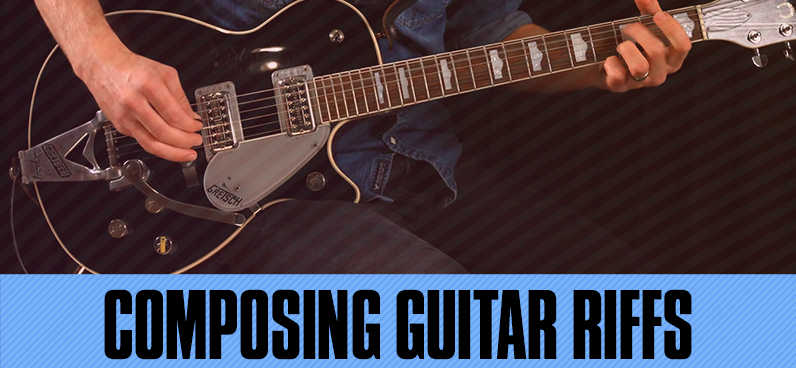The Hendrix chord is usually a 7#9 chord, and more specifically, an E7#9.
The chord shape is colloquially called the Hendrix chord because guitarist Jimi Hendrix frequently used it in a number of his songs like “Purple Haze.”
Let’s take this chord apart and see what it's all about in this online guitar lesson.
What is the 'Hendrix Chord?'

The chord was most notably used by Hendrix on “Purple Haze” off his first major album Are You Experienced.
The song begins with the classic staccato riff and as the verse begins, you can hear the chugging E7#9 chord.
It sounds bluesy and dirty.
It's always a good idea to look at a guitar chord chart when learning any new chord, like this one.
This rhythm is, for a lot of people, the very first song they heard from Hendrix, as “Purple Haze” was the opening track from the U.S. version of the album.
The Hendrix chord is also used on “Foxy Lady.”
And before Hendrix’s use of this chord, perhaps the most famous artists that used this chord were The Beatles.
The 7#9 is used in “Taxman” by The Beatles, and is actually played throughout the entire song.
Instead of using the E, The Beatles use a D7#9.
You can hear the 7#9 as the chord stabs at the end of each verse line.
Theory Behind The Chord
The important piece of this chord, and what makes it so Hendrix-y is because of how the guitar player played.
Since Hendrix was known for his electrified and distorted tone, the E7#9 chord sounds especially nice with an electric guitar, and with tons of distortion.
Technically, another reason why this guitar chord is so interesting is because it is a split chord, or a chord that contains a major and minor third at the same time.
This makes it not really a major or minor chord, but somewhere in between.
The chord kind of hangs in the air and creates a lot of tension.
Hendrix used this chord in quite a lot of his songs.
How To Build The Hendrix Chord
This chord is usually played starting on the root note E.
You'll find this on the 7th fret of the A string.
This note is the foundation of your chord.
Next, you'll add in a D note, which gives the chord its '7' quality.
You can play this note on the 7th fret of the G string.
Now bring in the major third; the G# note.
This adds a major feel to the chord.
You play this on the 6th fret of the D string.
This is where the Hendrix chord gets its unique sound - the #9 note is actually a F##, which sounds the same as a G natural.
You add this note on the 8th fret of the B string.
Finally, add the fifth for stability.
This is a B natual note.
While the chord can sound complete without it, adding this note can give it a fuller sound.
You can play this B note on the 7th fret of the E string.
Now, let's map it out in terms of finger positioning, assuming standard tuning (EADGBE):
Index finger: 6th fret of the D string (G#).
Middle finger: 7th fret of the A string (E).
Ring finger: 7th fret of the G string (D).
Pinky finger: 8th fret of the B string (G).
When you strum these together, you get that distinctive, edgy sound that's a mix of sweet and sour – the E7#9 chord.
It's a jazzy, funky sound that definitely stands out.
Try it out slowly at first, get comfortable with where your fingers need to be, and then experiment with strumming or adding it into different music.
Remember, it's all about that blend of harmony and a little bit of tension.
Hendrix Chord Embellishments
Hendrix also incorporated a number of hammer-ons and embellishments when playing his chords.
Sticking with E7#9 as the example, grab the power chord op the neck on the A string - X7333X.
Now, position your index finger on fret 9 of the A string and barre the A, D, G strings on the 9th fret.
All you'll do is hammer-on the A string from fret 9 to fret 11, and you'll have the iconic Jimi Hendrix embellishment.
Final Thought
The Hendrix chord, officially known as the E7#9, is basically the rock 'n' roll version of a secret sauce.
This chord mixes a little bit of sweet with a touch of sour, creating a sound that's as funky as it is unforgettable.
It's not just about the notes themselves, but the cool, edgy vibe they bring when played together, making any guitar riff instantly more vibrant and alive.
So when you're jamming on your guitar and want to add some spice to your music, throw in the Hendrix chord and watch the magic happen.
FAQ
How to do the Hendrix chord?
Easy-peasy, grab your guitar! You're aiming for the E7#9 chord.
Place your index finger on the 6th fret of the D string, middle finger on the 7th fret of the A string, ring finger on the 7th fret of the G string, and your pinky on the 8th fret of the B string.
What is the sharp 9 chord for Hendrix?
That’s the fancy term for the Hendrix chord, also known as the E7#9.
It’s the mix of a dominant seventh chord sprinkled with an extra note that gives it a sharp, edgy twist.
Did Jimi Hendrix use power chords?
Oh, absolutely! Hendrix wasn’t just about psychedelic sounds and wild solos; he definitely threw down some meaty power chords in his time.
What is the V7 9 chord?
This one's a jazzier cousin in the chord family.
It combines the tension of a dominant seventh chord (the V7) with the added color of a ninth.
What does 7 9 mean on guitar?
This means you’re playing a chord that's got a bit of everything: a dominant seventh (that's the "7") plus a ninth (the "9").
What are the rules for the V7 chord?
The V7 chord is all about tension and release.
The tension of a 5 dominant chord typically leads back "home" to the I chord.
Think of it as the chord that builds up the suspense before resolving into a comforting ending.
Is V7 a dominant chord?
You bet it is! The V7 is the quintessential dominant chord.
It’s the boss of the chord world, leading the way and resolving back to the tonic like a hero returning home.
How many inversions are there of the V7 chord?
There are four inversions for the V7 chord: root position, first inversion, second inversion, and third inversion.
What is a V7 chord in a major?
In a major key, the V7 chord is formed from the fifth note of the scale.
So, if you’re in C major, your V7 would be G7.
What is the difference between V and V7 chord?
The V is your basic major chord based on the fifth note of the scale.
The V7 adds a seventh note into the mix, bringing a bit of drama and tension.

